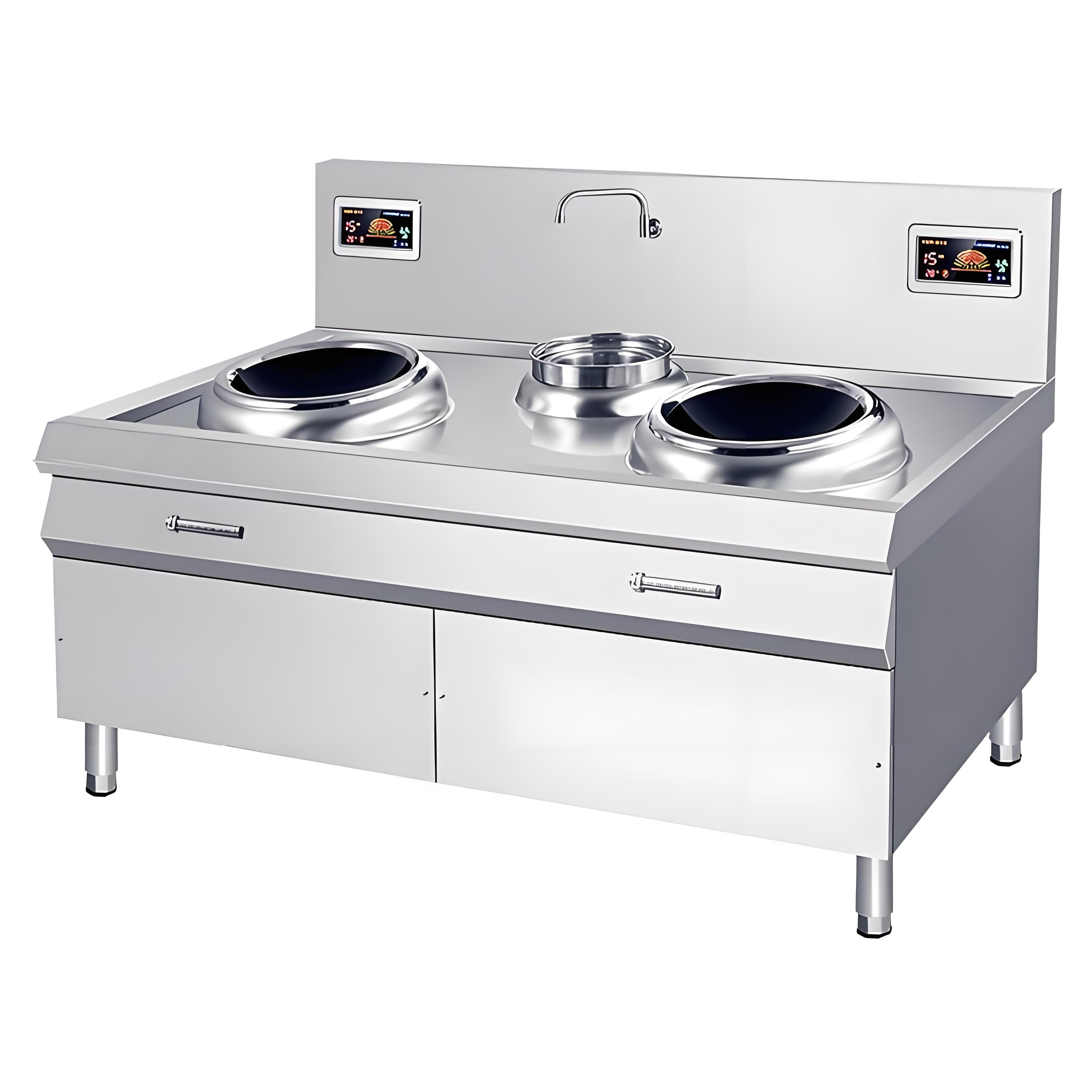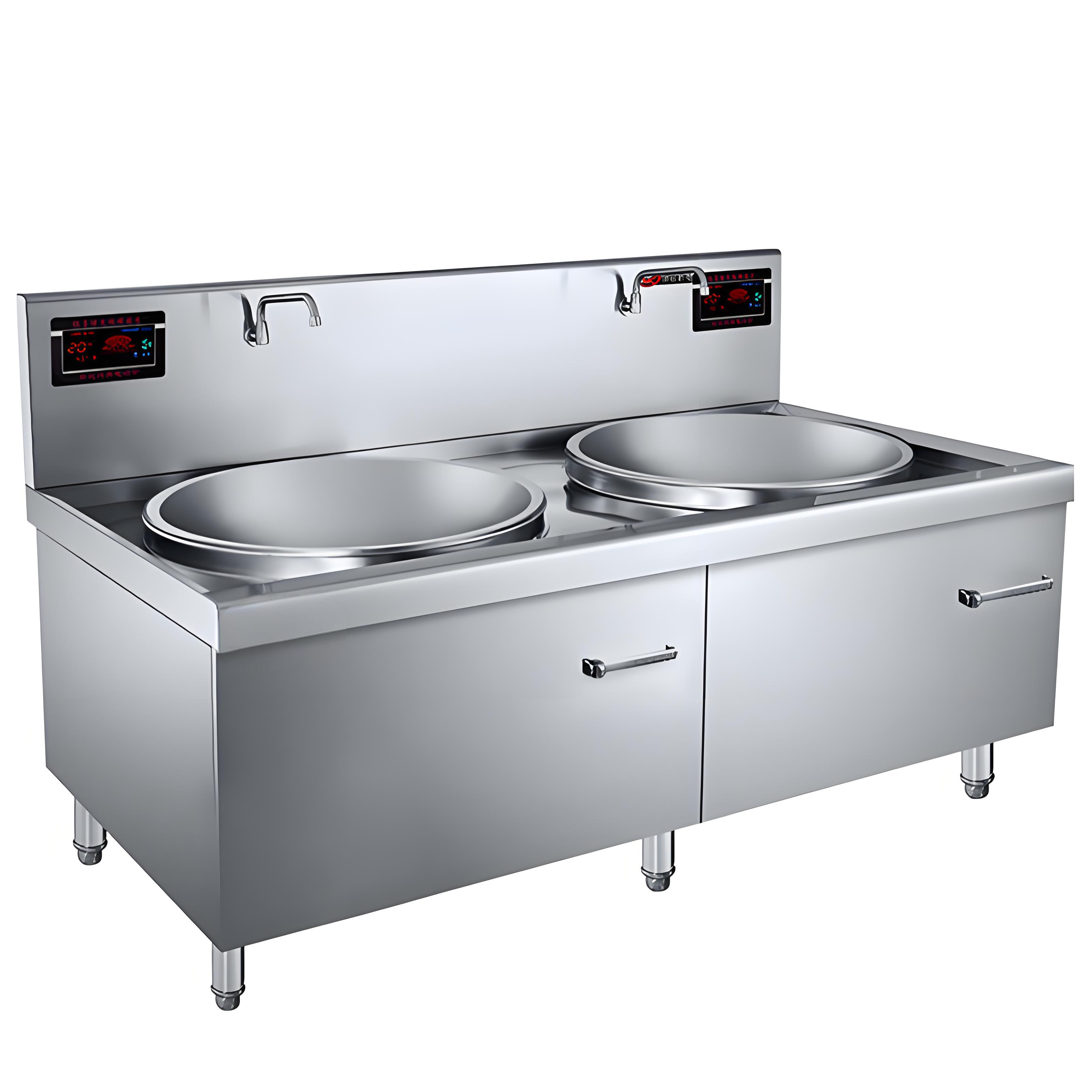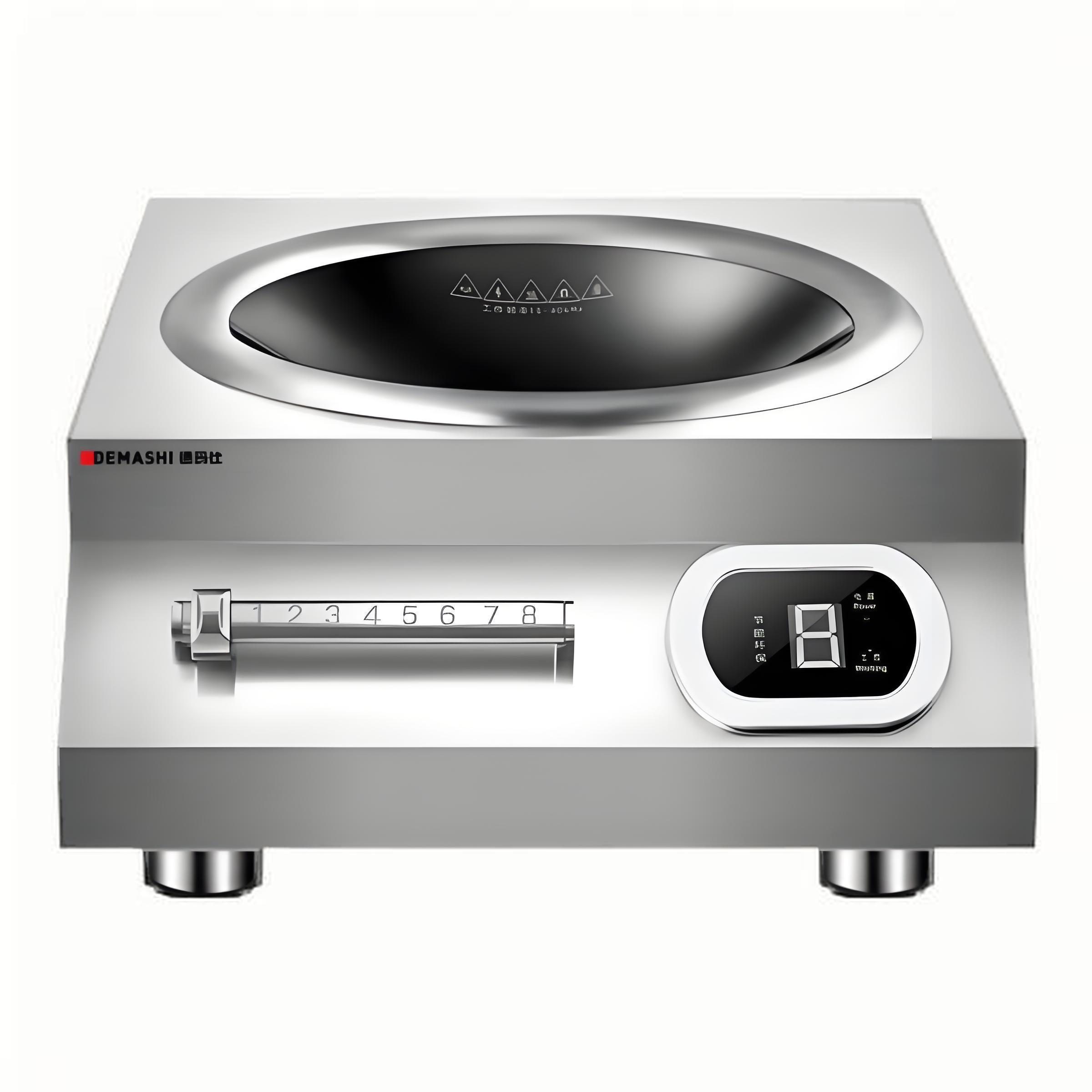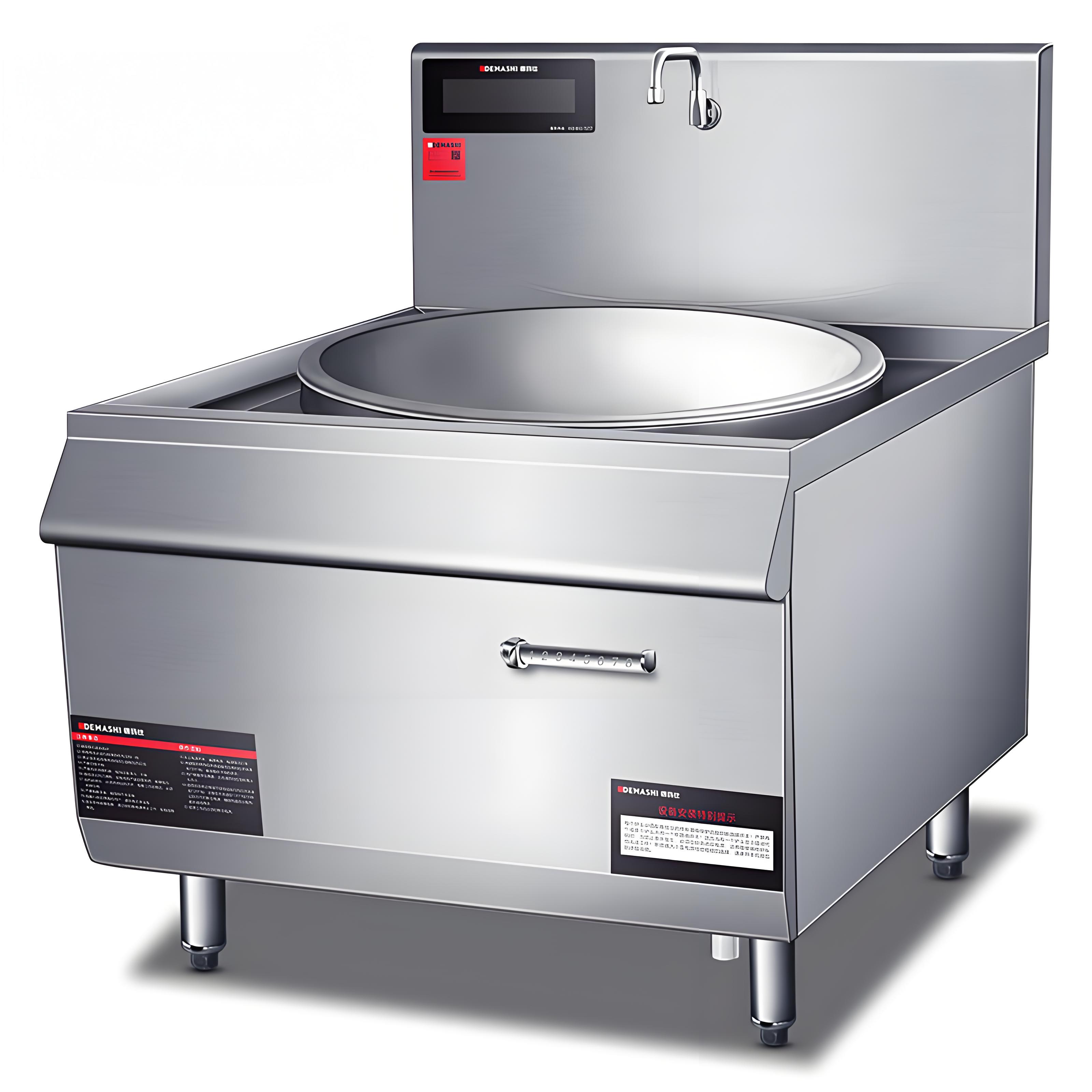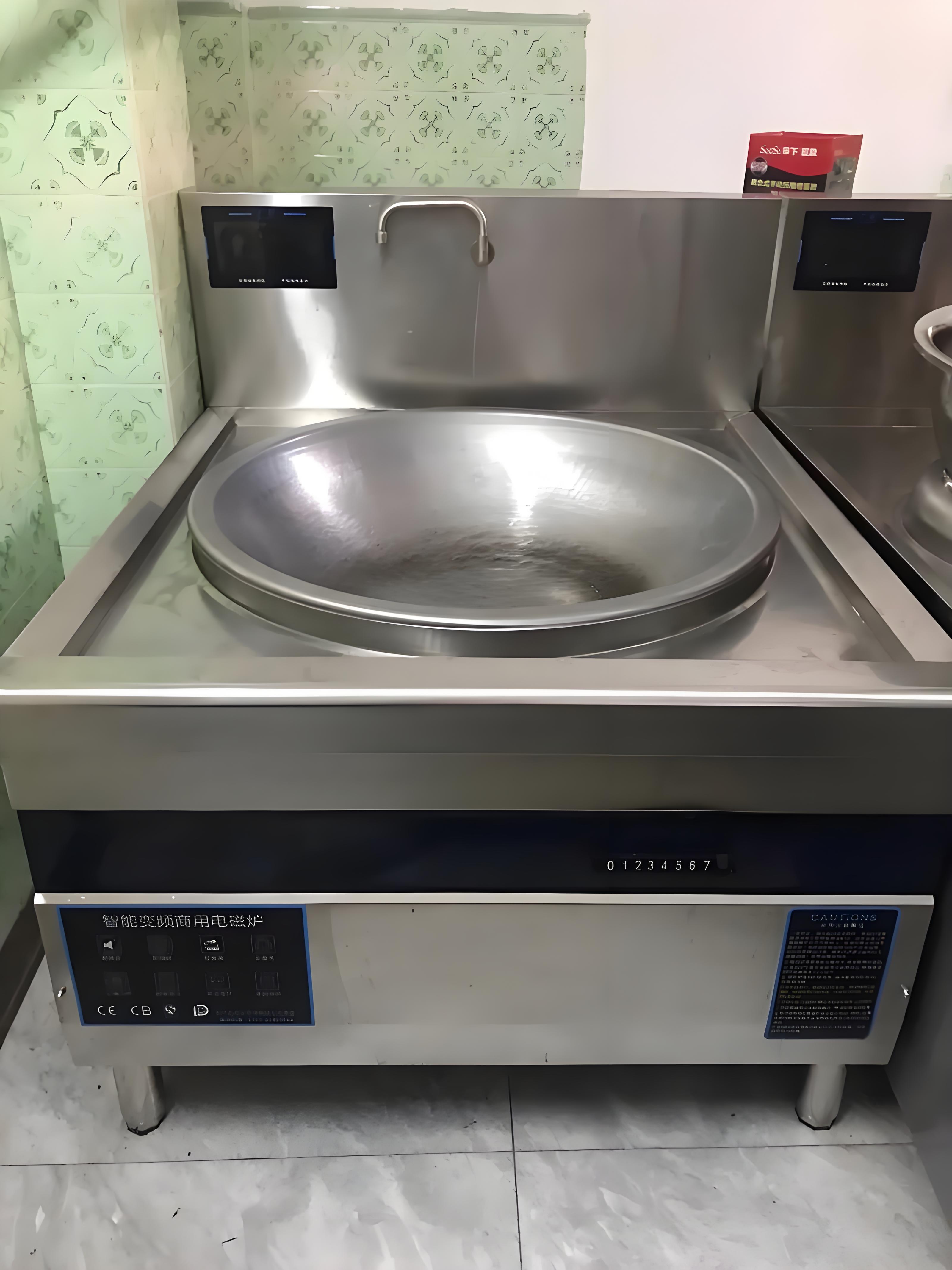As a commercial kitchen equipment engineer, the right induction cooker is very important for the operation of the restaurant. The power selection of the commercial induction cooker is directly related to the cooking efficiency, energy consumption cost, and even the safety of the kitchen. Today, I will tell you how many kilowatts of induction cooker is suitable for commercial kitchens, so that you can avoid detours when purchasing.
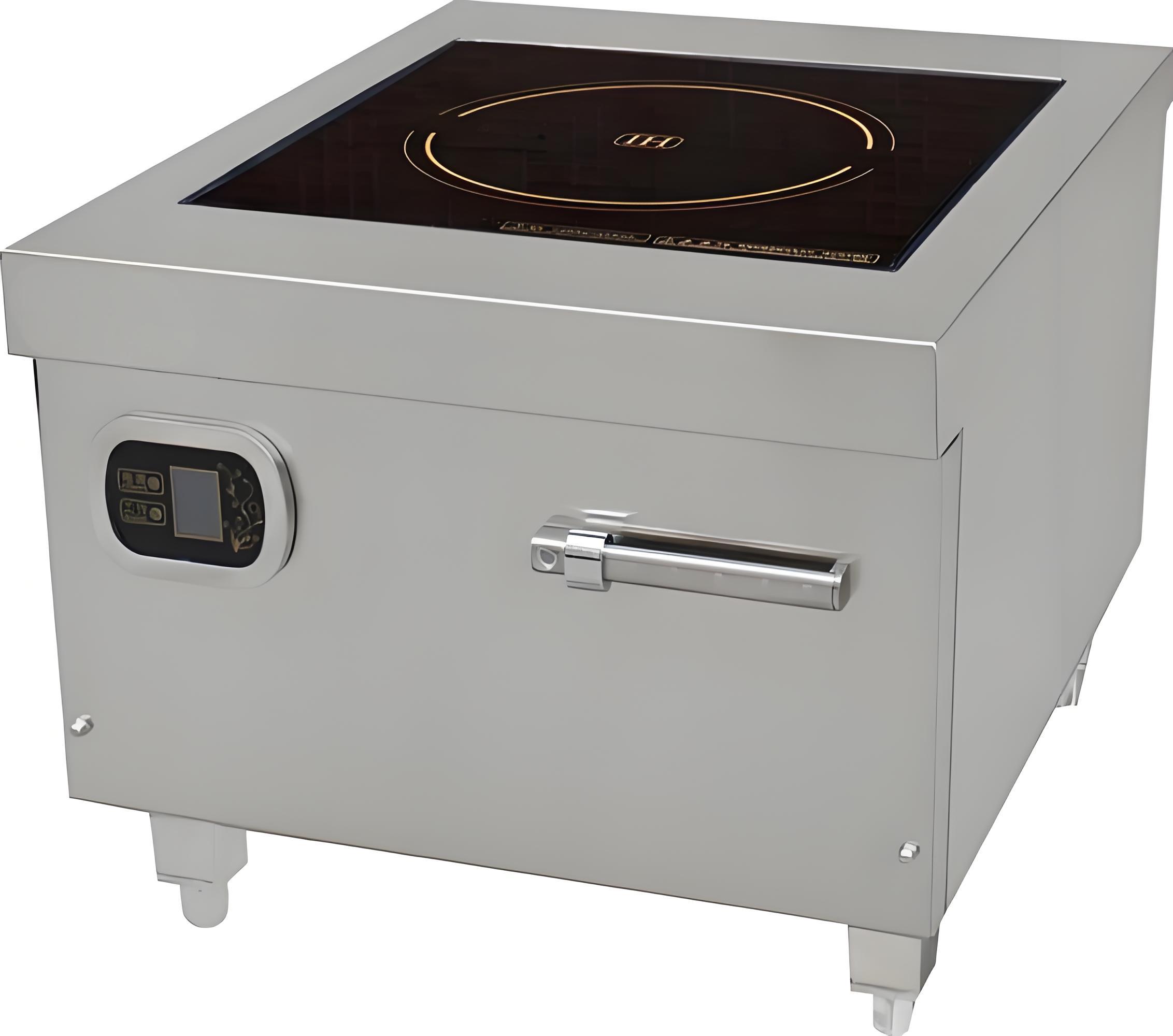
Why Does Wattage Matter So Much?
In a commercial kitchen, the wattage of an induction cooker determines its heating speed, suitability for specific tasks, and energy efficiency. Choosing an inappropriate wattage can lead to several issues:
Too Low Wattage: Insufficient heat output slows down cooking, especially during peak hours, leading to delays in service.
Too High Wattage: While powerful, it increases energy costs significantly and places higher demands on the kitchen’s electrical system, potentially causing safety hazards.
Poor Match: Different cuisines and cooking methods require specific heat levels, and the wrong wattage may fail to meet operational needs.
Therefore, selecting the right wattage for a commercial induction cooker requires careful consideration of kitchen size, cuisine type, electrical capacity, and budget. Below, I’ll break down these factors to help you find the perfect fit.

Common Wattage Ranges for Commercial Induction Cookers
Commercial induction cookers typically range from 3.5 kW to 35 kW, with each range suited for different scenarios. To make this clearer, I’ve compiled a table outlining common wattage ranges and their applications:
| Wattage Range | Applicable Scenarios | Advantages | Considerations |
|---|---|---|---|
| 3.5 kW – 8 kW | Small restaurants, fast food outlets, cafés | Low energy consumption, suitable for small kitchens, lower electrical requirements | Limited heat output, unsuitable for high-heat stir-frying |
| 8 kW – 15 kW | Mid-sized restaurants, chain dining | Balanced heat output, versatile for various cooking methods, cost-effective | Requires verification of electrical capacity |
| 15 kW – 25 kW | Large Chinese restaurants, hotel kitchens | Strong heat output, ideal for high-intensity stir-frying | High energy consumption, requires professional electrical setup |
| 25 kW – 35 kW | Banquet halls, oversized kitchens | Extremely powerful, suitable for bulk cooking | High electricity costs, requires three-phase power |
As the table shows, higher wattage means stronger heat output but also greater electrical and cost demands. Next, I’ll dive into how to choose the right wattage based on different kitchen types and needs.
Wattage Selection for Different Types of Commercial Kitchens
1. Small Restaurants or Fast Food Outlets (Daily Customer Flow < 100)
If you run a small fast food outlet or café with a kitchen area of 10-20 square meters and a modest daily customer flow, a 3.5 kW to 8 kW induction cooker is typically sufficient.
Why This Wattage?
These kitchens primarily handle heating, simmering soups, or light frying for simple meals, noodles, or Western-style snacks, which don’t require intense heat. A 3.5 kW induction cooker can easily manage tasks like boiling noodles or frying eggs, while an 8 kW unit can handle slightly faster-paced cooking, such as fried rice or side dishes.
Real-World Example: I once assisted a chain café with their kitchen setup. Their menu focused on sandwiches and soups, and we equipped them with a 5 kW single-burner induction cooker. A year later, the manager reported that energy costs were well-controlled, and the cooker met their service demands perfectly.
Considerations:
Small kitchens often rely on single-phase power with a maximum load of around 10 kW. Ensure the cooker’s wattage aligns with your electrical capacity to avoid frequent circuit breaker trips. If budget is a concern, opt for a cooker with smart power adjustment features to switch heat levels flexibly, saving energy.

2. Mid-Sized Restaurants (Daily Customer Flow 100-300)
Mid-sized restaurants, such as chain hotpot restaurants, Sichuan, or Cantonese eateries, need to handle multiple dishes simultaneously with a higher turnover rate. 8 kW to 15 kW induction cookers are the go-to choice for these kitchens.
Why This Wattage?
An 8 kW to 15 kW induction cooker offers a balanced heat output, capable of meeting the demands of quick stir-frying (e.g., Sichuan-style dishes) or sustained heating for hotpot restaurants. A 12 kW cooker, in particular, is a versatile “all-purpose” option, suitable for frying, stir-frying, boiling, and steaming.
Real-World Example: I consulted for a Sichuan restaurant specializing in spicy hotpot and boiled fish, with a kitchen area of about 30 square meters. We installed two 12 kW double-burner induction cookers and an 8 kW soup cooker. The owner reported a 30% increase in service efficiency during peak hours, with precise temperature control improving dish consistency.
Considerations:
Mid-sized kitchens typically require three-phase power. Before purchasing, have an electrician verify the load capacity of your distribution panel. For restaurants focusing on stir-frying, choose a cooker with multi-level heat adjustment for flexibility in cooking different dishes.

3. Large Restaurants or Hotel Kitchens (Daily Customer Flow > 300)
Large restaurants or hotel kitchens face heavy cooking demands, diverse menus, and the need for rapid service during peak hours. 15 kW to 25 kW induction cookers are ideal, with some oversized kitchens requiring 25 kW to 35 kW units.
Why This Wattage?
High-wattage cookers deliver intense heat for fast stir-frying, such as for dishes like stir-fried beef or kung pao chicken, which require high temperatures in a short time. Units above 25 kW are better suited for banquet halls or bulk cooking scenarios, like preparing dozens of pounds of ingredients at once.
Real-World Example: I was involved in a kitchen overhaul for a five-star hotel’s banquet hall, which needed to serve over 500 guests simultaneously. We equipped them with three 25 kW induction woks and a 15 kW steaming/boiling unit. After six months, the hotel reported high equipment efficiency, consistent dish quality, and improved customer satisfaction.
Considerations:
High-wattage cookers require three-phase power and a robust distribution panel with sufficient capacity (consult a professional electrician). Additionally, these units consume significant electricity, so consider energy-efficient models to reduce long-term operating costs.
Other Factors Influencing Wattage Selection
Beyond kitchen size and customer flow, several other factors should guide your wattage choice:
1. Cuisine Type
Different cuisines have varying heat requirements:
Chinese Stir-Fry (e.g., Sichuan, Hunan): Requires 15 kW or higher for intense, rapid heating.
Cantonese or Soup-Based Dishes: 8 kW to 12 kW is sufficient, emphasizing slow simmering and precise temperature control.
Western or Japanese Cuisine: 5 kW to 10 kW works well, as heat demands are moderate.
Hotpot or Buffet: 8 kW to 15 kW, suitable for prolonged heating.
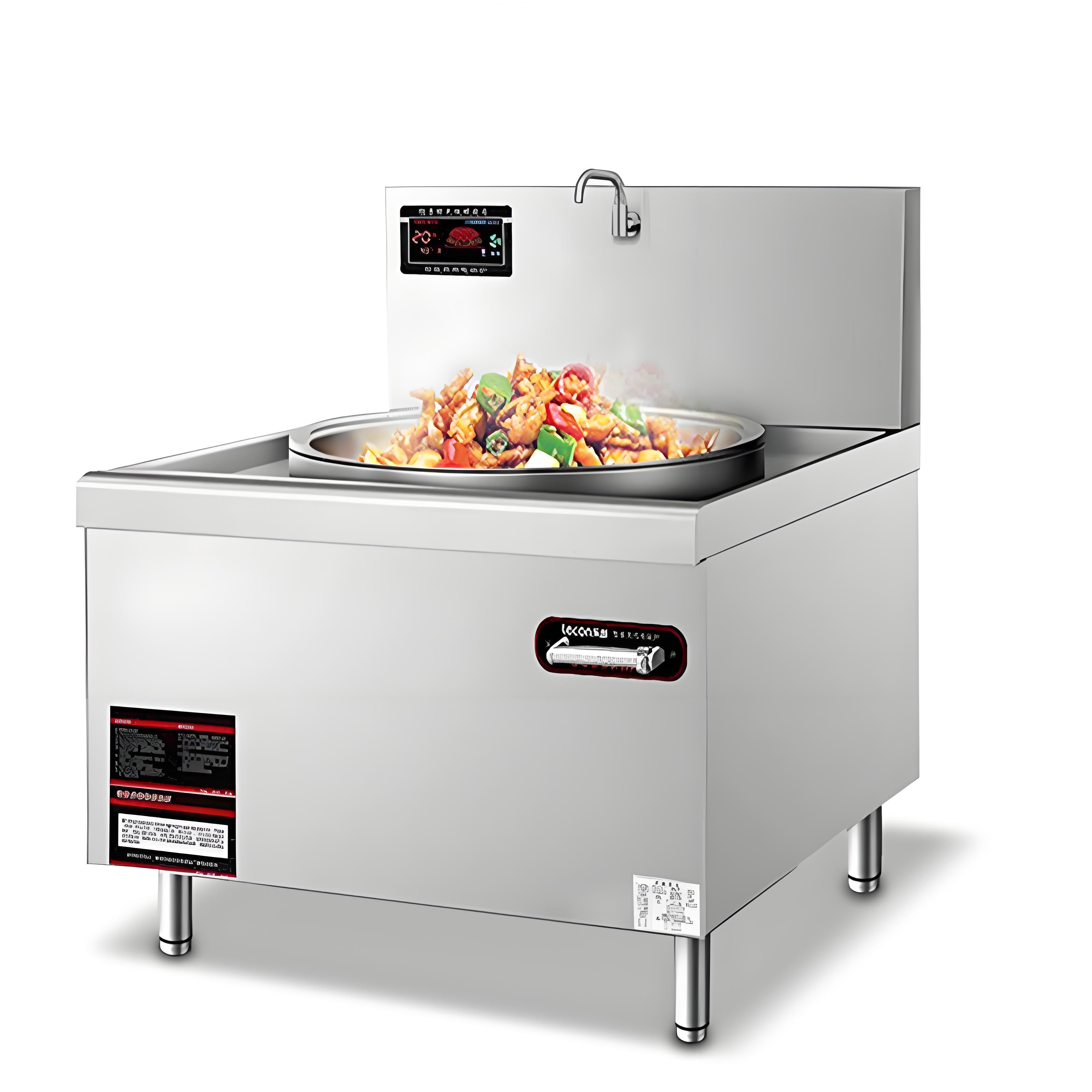
2. Kitchen Electrical Conditions
Commercial induction cookers with high wattage have strict electrical requirements. Before purchasing, have a professional electrician assess:
Single-Phase Power: Supports 3.5 kW to 8 kW units, common in small kitchens.
Three-Phase Power: Required for 8 kW and above, suitable for mid-to-large kitchens.
Meter Capacity: Ensure the meter and distribution panel can handle the cooker’s full load.
According to State Grid Corporation of China, commercial kitchen electrical systems should include a 20% capacity buffer to handle peak usage.
3. Balancing Budget and Energy Costs
High-wattage cookers, while efficient, increase electricity costs. For example, a 15 kW cooker running 8 hours daily at $0.15 per kWh costs approximately $540 per month (15 kW × 8 hours × 30 days × $0.15). If budget is a concern, opt for cookers with energy-saving modes that use smart temperature control to reduce consumption.
4. Induction Cooker Features and Configurations
Modern commercial induction cookers come with advanced features. When selecting, consider:
Multi-Level Heat Adjustment: Allows chefs to tailor heat to specific dishes.
Smart Temperature Control: Prevents overheating and extends equipment lifespan.
Waterproof Design: Essential for humid kitchen environments (look for IPX4 or higher ratings).
Multi-Burner Design: Double or multi-burner units improve service efficiency in mid-to-large kitchens.
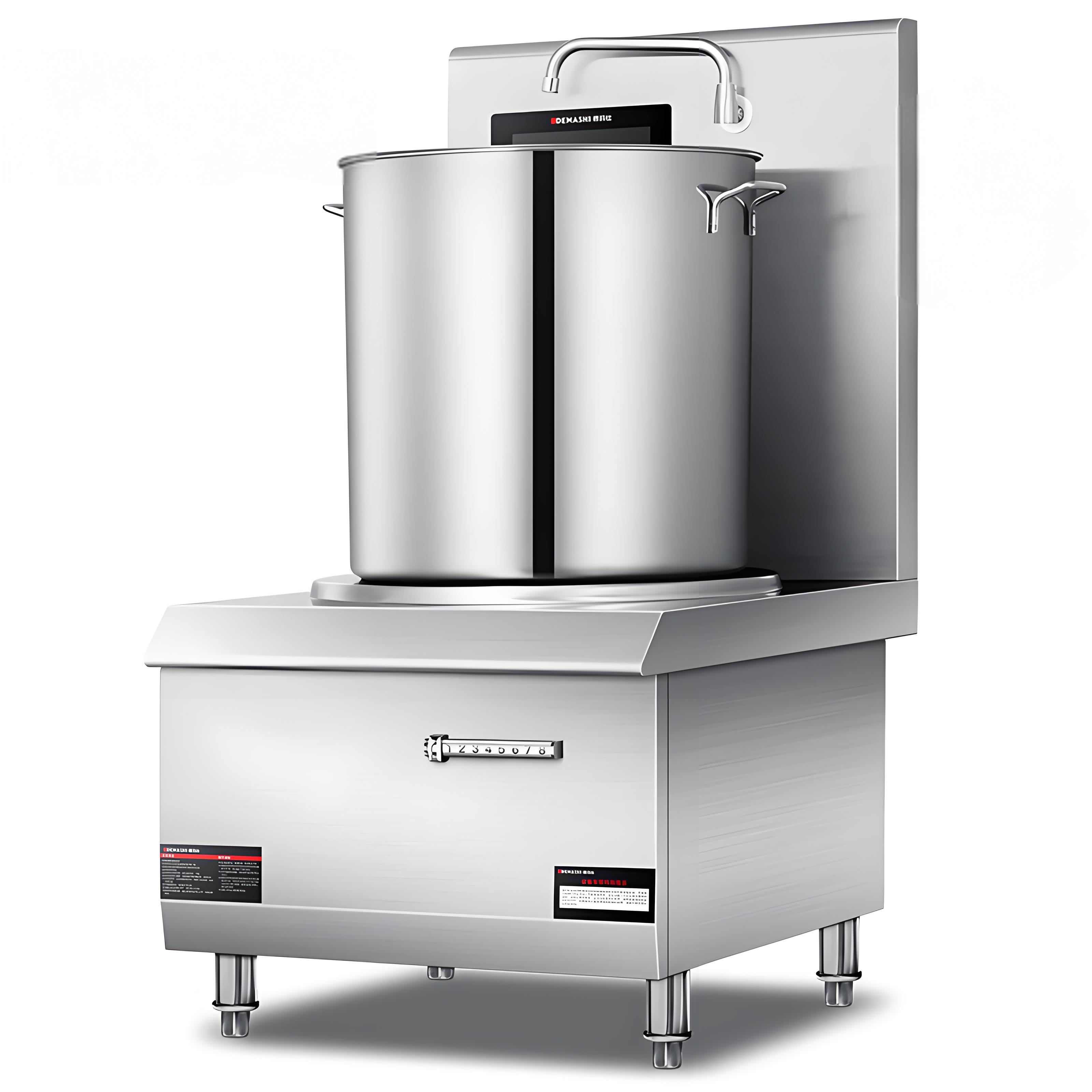
How to Avoid Common Pitfalls in Selection?
From helping numerous restaurants choose induction cookers, I’ve seen many owners fall into these traps:
Chasing High Wattage Blindly: Assuming higher wattage is always better, only to face skyrocketing electricity bills and circuit issues.
Solution: Choose wattage based on actual needs, referring to the table and examples above.
Ignoring Electrical Compatibility: Purchasing a high-wattage cooker only to find the kitchen’s wiring can’t support it.
Solution: Have an electrician assess electrical capacity before buying, upgrading the panel if needed.
Focusing Solely on Price: Cheap cookers may have safety issues, like poor heat dissipation or low-quality coils.
Solution: Prioritize units with CCC certification or ISO9001 certification for safety and durability.
Overlooking After-Sales Service: Commercial cookers are used heavily, making reliable maintenance critical.
Solution: Choose suppliers with robust after-sales networks and clear service agreements.
Real-World Case Study: A Failed Wattage Choice
A few years ago, a chain restaurant owner reached out for help. Their new branch had purchased several 8 kW induction cookers, expecting them to meet demand. However, during peak hours, service lagged, leading to customer complaints. After visiting the site, I found their menu focused on Sichuan dishes requiring intense stir-frying, which the 8 kW cookers couldn’t handle. We replaced them with 15 kW double-burner cookers and upgraded the kitchen’s electrical system. Peak-hour efficiency improved by 40%, and customer satisfaction soared.
This case underscores the importance of matching wattage to actual needs. Learn from this to avoid similar costly mistakes.
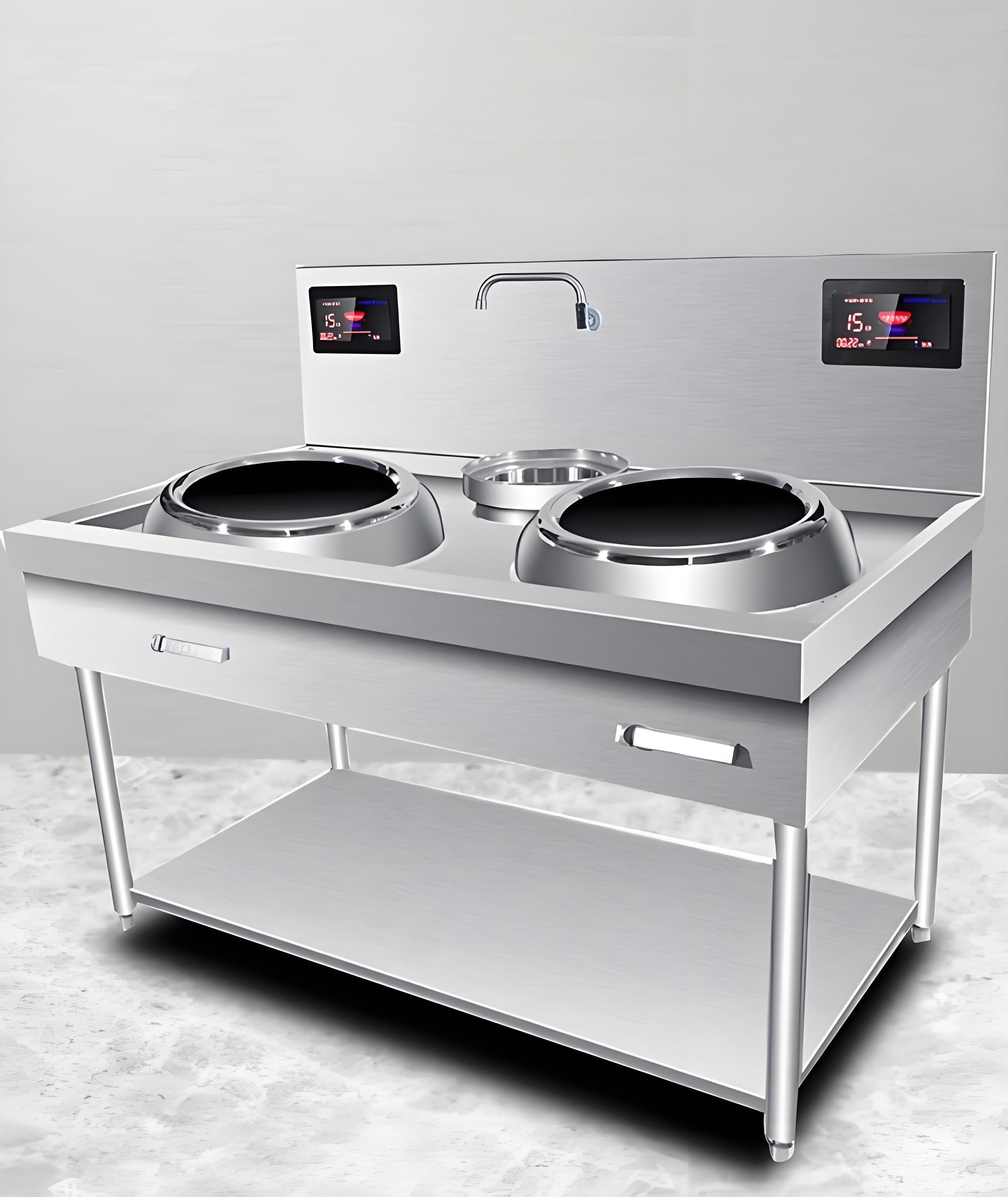
Conclusion: How to Choose the Right Wattage?
There’s no one-size-fits-all answer for selecting the wattage of a commercial induction cooker, but these guidelines can steer you right:
Understand Kitchen Needs: Match wattage to your kitchen size, cuisine, and customer flow.
Verify Electrical Conditions: Ensure your meter and panel can support the cooker’s load.
Balance Cost and Efficiency: Weigh initial investment against long-term energy costs.
Choose Reliable Equipment: Opt for certified cookers with strong after-sales support.
If you’re still unsure about the right wattage, consult a professional electrician or equipment supplier for tailored advice based on your kitchen’s setup. Choosing the right induction cooker will not only boost service efficiency but also make your kitchen operations smoother and more cost-effective!
Related Q&A
Q1: What’s the difference between commercial and household induction cookers?
A: Commercial induction cookers have higher wattage (typically 3.5 kW and above) and greater durability for high-intensity, continuous use. Household cookers, usually around 2 kW, are designed for small-scale cooking and can’t meet commercial demands.
Q2: How do I know if my kitchen’s electrical system can support a high-wattage cooker?
A: Have a professional electrician check your meter capacity, distribution panel load, and wiring condition. Single-phase power supports 3.5 kW to 8 kW, while three-phase is needed for 8 kW and above. Refer to State Grid Corporation of China for electrical standards.
Q3: Are higher-wattage cookers always better?
A: Not necessarily. High wattage suits stir-frying and large kitchens but increases electricity costs and electrical demands. Smaller kitchens benefit from lower-wattage, cost-effective units.
Q4: How can I improve the energy efficiency of an induction cooker?
A: Choose models with smart temperature control and energy-saving modes, and plan cooking processes to avoid prolonged idle operation.
Q5: Do commercial induction cookers require regular maintenance?
A: Yes, inspect the coils, cooling system, and control panel every 3-6 months to ensure safe and reliable operation.
I hope this article helps you find the perfect commercial induction cooker! Feel free to reach out with any further questions!
